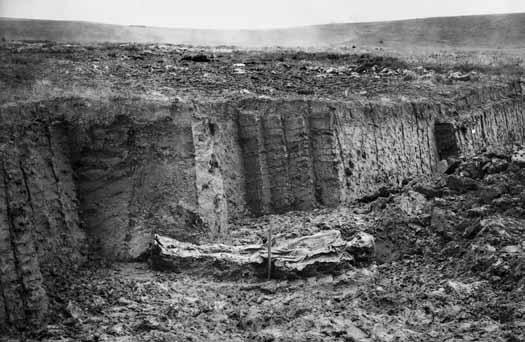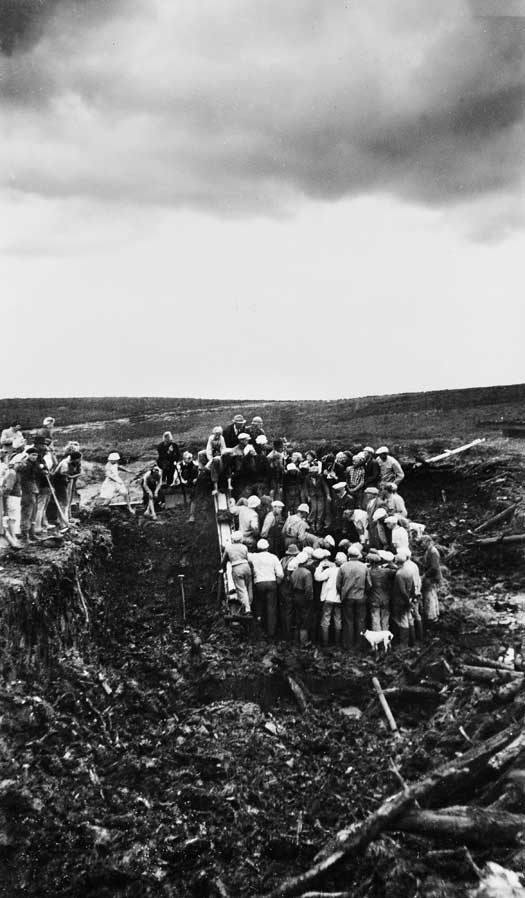The chemistry of the bog bodies
Over a hundred bog bodies are preserved up until today because of the particularly good conditions of preservation in the peat bogs. The mummified bog bodies make up around a quarter of these. In such cases soft parts of the body - like skin, hair and stomach contents - are preserved. The remaining bog bodies consist of skeletons. The most well-preserved bodies - such as the woman from Huldremose, Grauballe Man and Tollund Man - have been found in raised bogs. Here the specific acidic and oxygen-poor conditions are present, which allow for the mummification of the body’s soft parts. However, many other conditions must also be fulfilled in order to prevent micro-organisms from breaking down the human body. The corpse must be sunk in water or dug into the ground and covered quickly. In addition, the deposition of the body must occur when the bog water is cold in the winter or early spring, otherwise the process of decay can begin. Archaeological excavations have also shown that some of the bog bodies from the end of the Bronze Age and Early Iron Age were placed in old peat-digging holes and that the bodies were held down with sticks or turfs.


